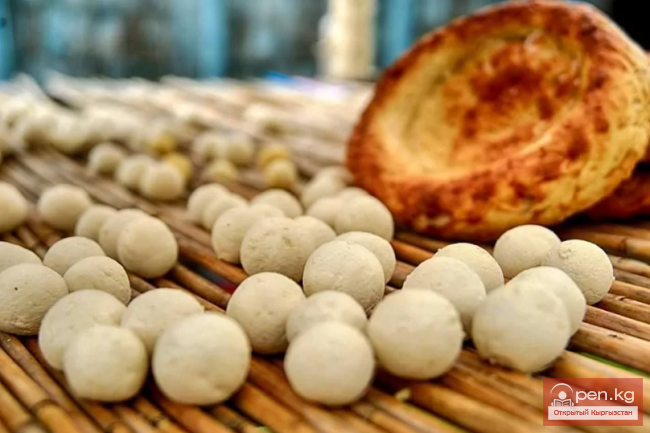 The history of cultural development of humanity knows that ancient people, in a certain sense, were chemists in their daily lives. Like any other people, the Kyrgyz not only prepared food but also knew how to make soap for household needs, as well as tallow candles. For soap making, they used plants with a high content of alkali, such as herbs like alabata (a type of goosefoot) and broadleaf creeping bugloss, which were collected and dried in early autumn. The ash obtained from burning these herbs was placed in a large cauldron, covered with water, and left for a day. Then the liquid was drained, filtering it through a kazanbak (Kazanbak — special woven vessels made from the shoots of young tal (willow) or shyraldzhyn (tarragon wormwood), resembling a large bird's nest).
The history of cultural development of humanity knows that ancient people, in a certain sense, were chemists in their daily lives. Like any other people, the Kyrgyz not only prepared food but also knew how to make soap for household needs, as well as tallow candles. For soap making, they used plants with a high content of alkali, such as herbs like alabata (a type of goosefoot) and broadleaf creeping bugloss, which were collected and dried in early autumn. The ash obtained from burning these herbs was placed in a large cauldron, covered with water, and left for a day. Then the liquid was drained, filtering it through a kazanbak (Kazanbak — special woven vessels made from the shoots of young tal (willow) or shyraldzhyn (tarragon wormwood), resembling a large bird's nest).In this process, the insoluble grains were left on the filter, while the yellow-brown filtrate was poured into a large cauldron and evaporated. According to chemical analysis, the dry residue contained potassium carbonate, calcium carbonate (CaCO₃), magnesium compounds, silicic acid and its salts (for example, NaSiO₃), among others. This dry residue was called shakar by the Kyrgyz. Shakar was mixed in a certain proportion with melted fat (badger, otter, boar, sheep, goat) and boiled to the desired thickness, then wrapped in cloth.
The quality of the soap depended on two factors: the content of potash in the ash and the quality of the fat. The soap was particularly good if shakar was mixed with badger or otter fat.
In the south of the republic, in Tegerek-Dzhara (now the coal mine of Tash-Kumyr), local residents washed their laundry in a liquid infused with the ash of the plant tushтан (a type of goosefoot), which contained water-soluble carbonates.













































